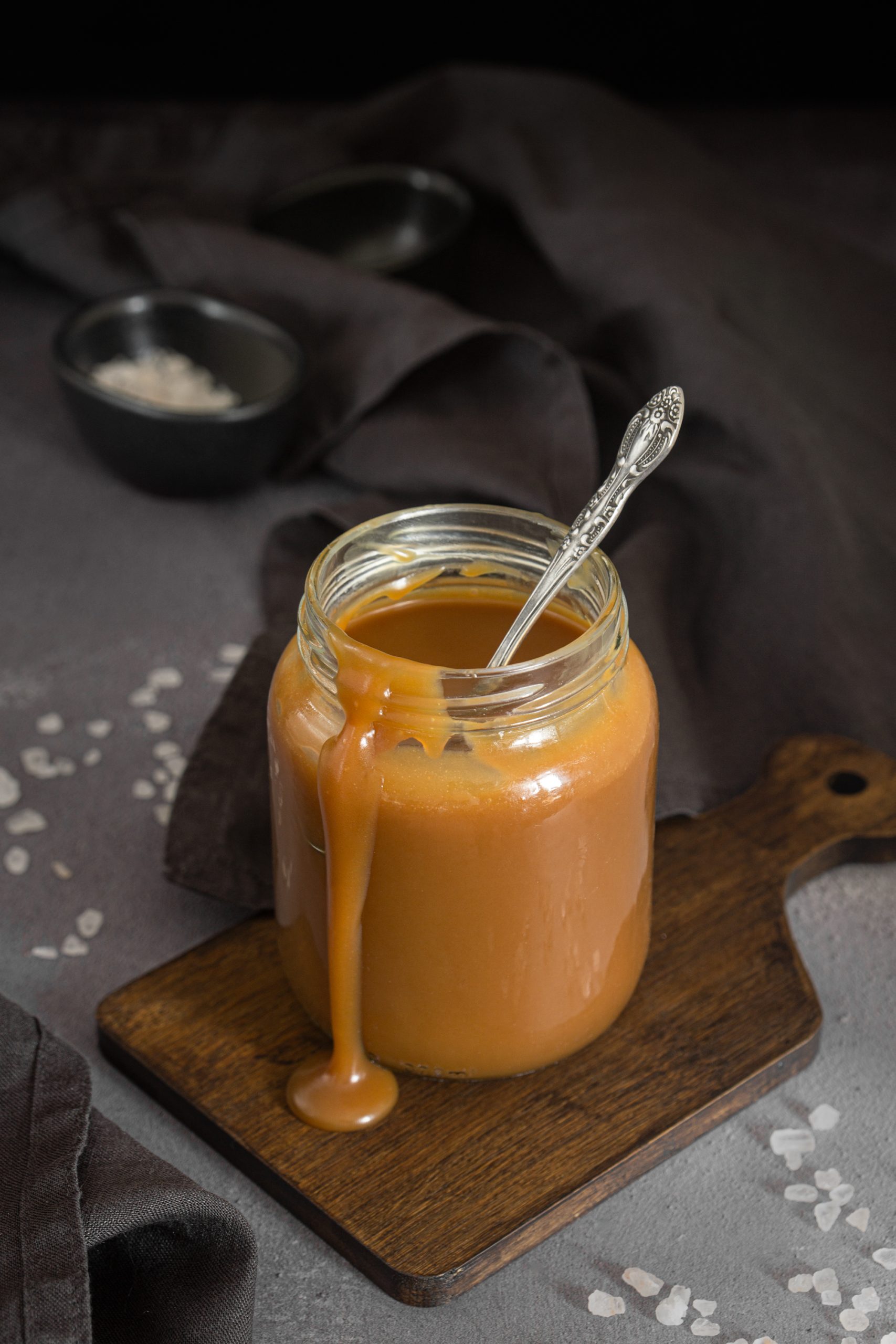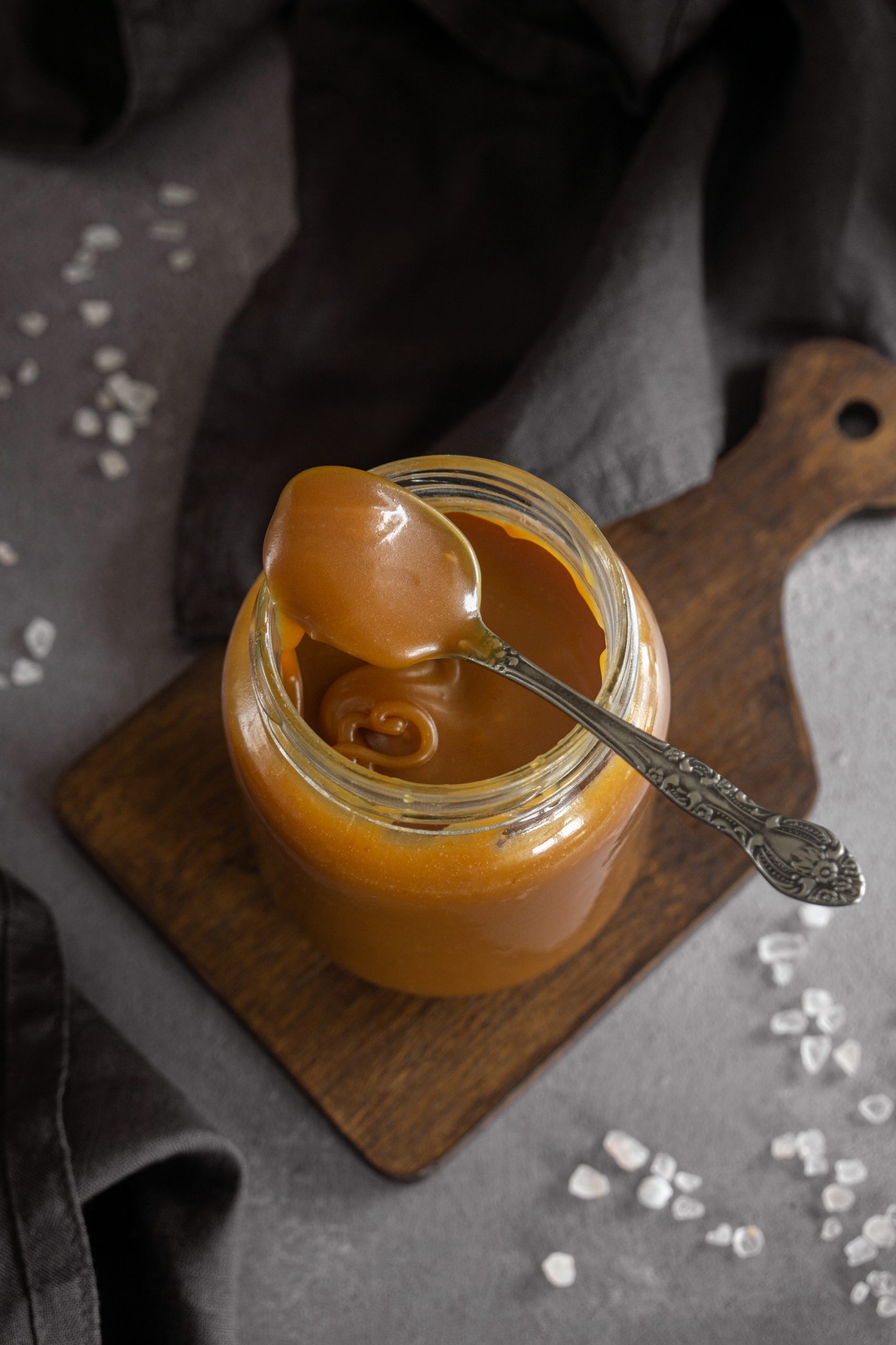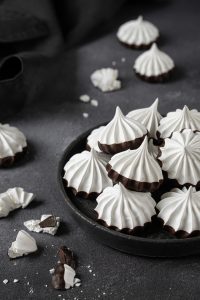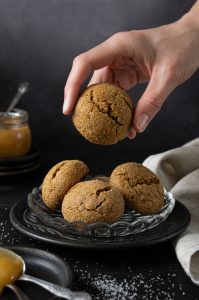This rich and creamy salted caramel sauce tastes simply amazing. Whether you eat it straight from a jar or drizzle it on ice cream, pancakes, or cheesecake. Making it at home may sound intimidating: just a few ingredients and a lot of space to fail. Well don’t worry, I’ve researched different caramel-making methods and found a foolproof way, that works perfectly every single time. And when you know a few tricks, making your homemade salted caramel sauce is truly simple! Let me share them with you.
How to make salted caramel sauce
Caramel sauce is made of caramelized sugar, cream, butter, and salt. Ingredients are (mostly) the same, but there are two different methods to convert them to caramel sauce: dry and wet.
Following a dry method, pure dry sugar is heated in a pot, mixing all the time till it fully melts. Then butter and cream are added. The wet method includes one extra ingredient – water. Sugar is firstly melted in a little amount of water, then sugar syrup is heated till it caramelizes and cream and butter are added in the end. I’ve tried both methods countless times and found one of them more appealing than the other. Here is why.
Which is better wet or dry caramel?
Both methods have their pros and cons. Some of them are objective, and some are based on my personal preferences.
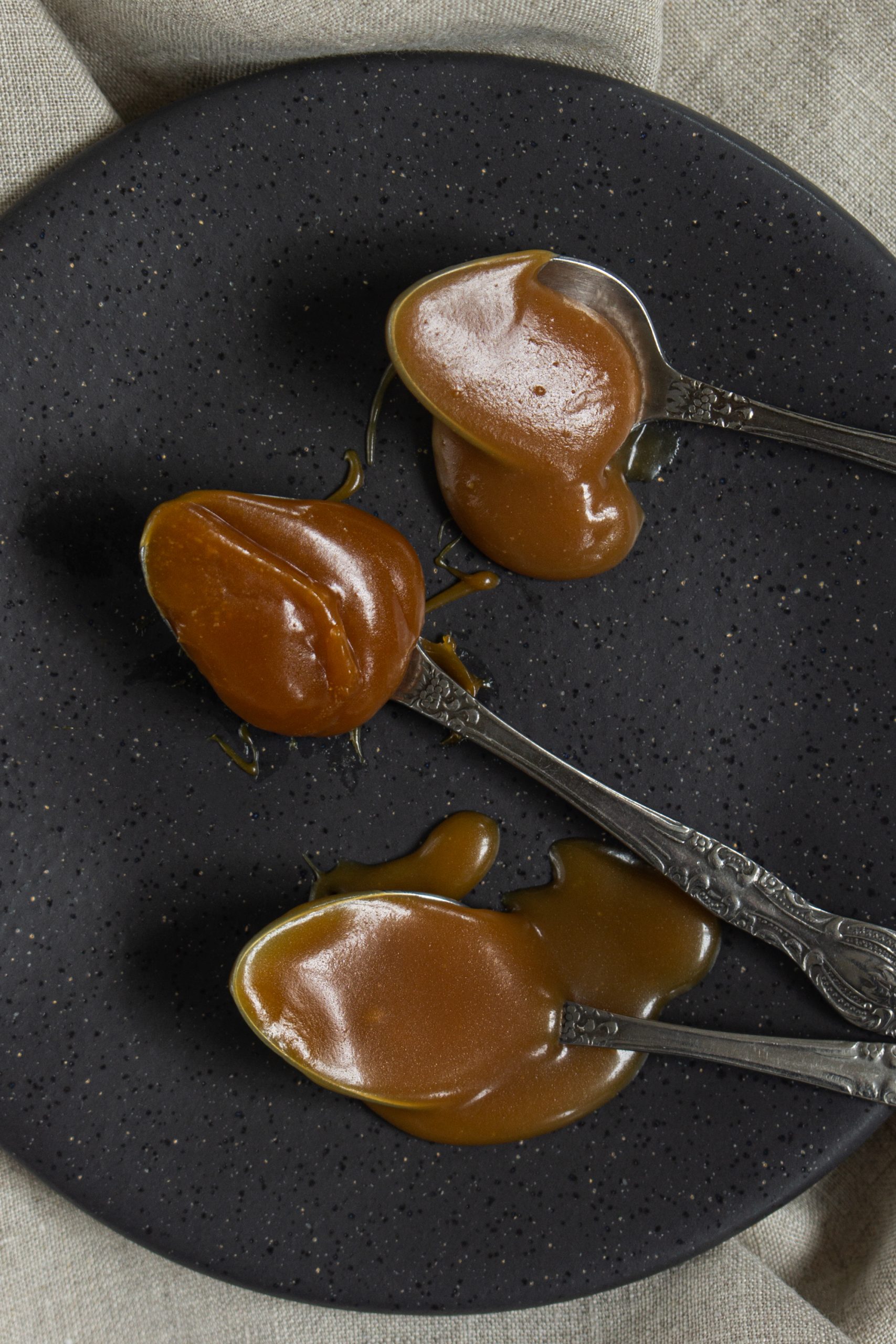
Dry Method:
- Quicker.
- A messy process, 100% hands-on. When the sugar starts melting, you have to mix it all the time, till it fully melts. If you do it too slowly, it lumps to hard candy bits, sticks to a pot, and burns.
- Produces very dark caramel and it’s almost impossible to control how dark it gets. When dry sugar melts, it gets dark at once. But it does not melt all at once. Do you get the idea?
- Very easy to burn. Following this method, you should add butter at once after all the sugar has melted. But I find it a bit hard to be sure that ALL of it has melted and it only takes seconds to burn. So most of the caramel I made using this method was too bitter for my taste.
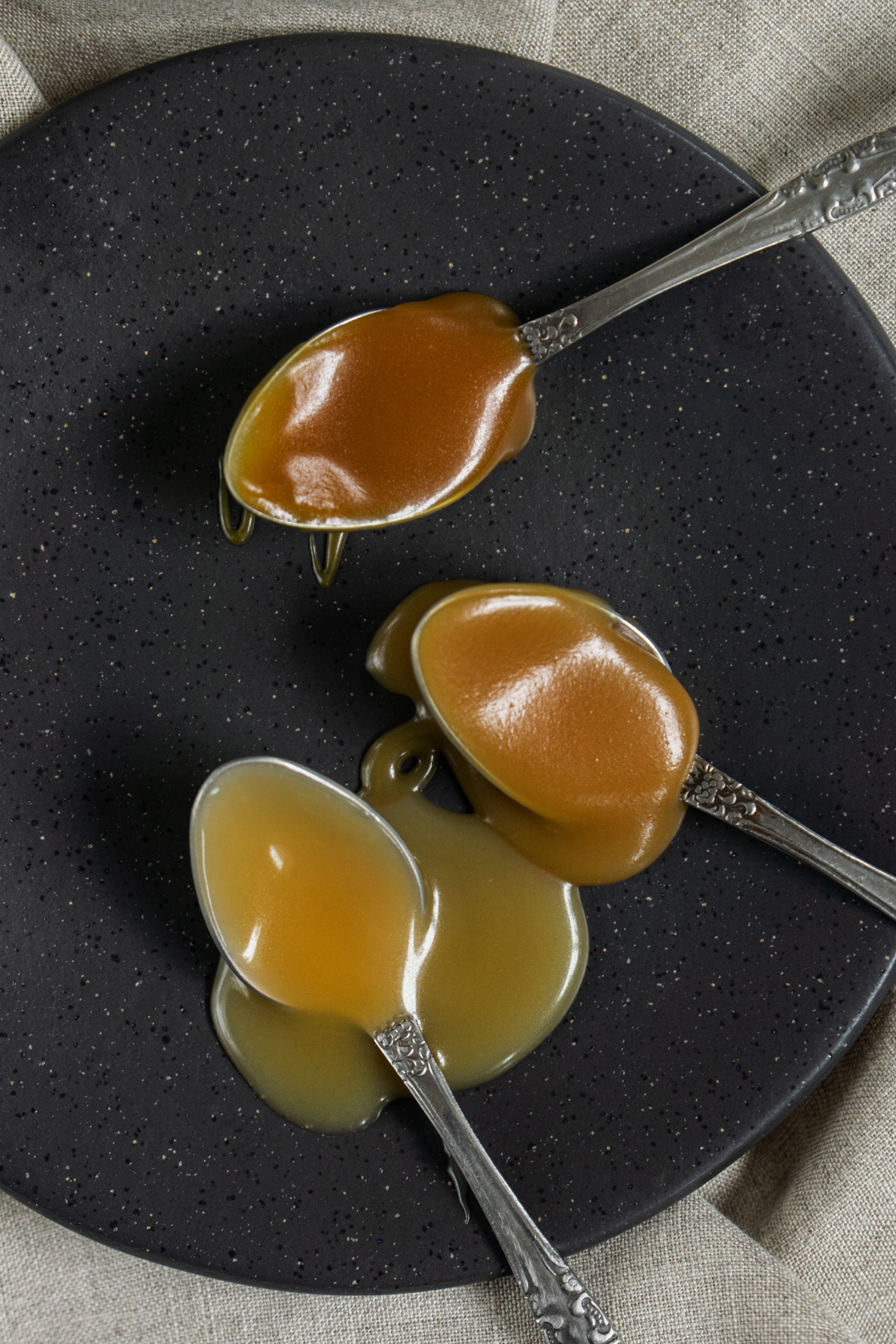
Wet Method:
- Produces any type of caramel, from very light to very dark. As you start with a liquid sugar syrup, you can stop heating it anywhere at the beginning or the end of the caramelization stage.
- Very simple process. Everything you need to do is watch how syrup boils and changes color. You start whisking only when adding the cream.
- It’s possible to use a candy thermometer if you are precision oriented and seek an identical result every time. But it’s not necessary, you can make a perfect caramel sauce judging just from the syrup color.
- Harder to burn. If you are watching carefully and not leaving a room or forgetting the boiling syrup, most probably you will not burn it and it won’t get bitter.
- Prone to recrystallization. But there are a few simple tricks to prevent it.
- Slower, because you have to melt sugar slowly in the beginning.
As it’s already obvious from my list, the wet method is the one I prefer. When I knew only the dry one, it seemed totally ok, but when I compared both… I found the wet method a lot easier to control. And getting the same perfect outcome every time is a huge plus, isn’t it?
Why does caramel sauce crystallize?
A high possibility of seeing your liquid caramel sauce form sugar crystals and get grainy when cooling does not sound cool at all. But if you know why it happens and how to prevent it, this possibility from high shrinks to very low.
What does crystallization mean? Granulated sugar is made of sucrose molecules. Sucrose is a disaccharide, composed of glucose and fructose subunits. Heating a mixture of granulated sugar and water breaks the chemical bond that links glucose and fructose and we get liquid syrup or inverted sugar. If these two molecules decide to bond together again, they form sucrose again, and it, surprise surprise, means crystals.
Why do they do that? Recrystallization can be caused by some foreign matter (like a piece of dust), that accidentally got to your pot. It can be caused by stirring or moving a pot. Some syrup may stick to a side of the pot, cool, and re-crystallize (remember, heat is the thing that broke the bond) and if those crystals touch the remaining syrup, they can cause a chain reaction. So what can we do about it?
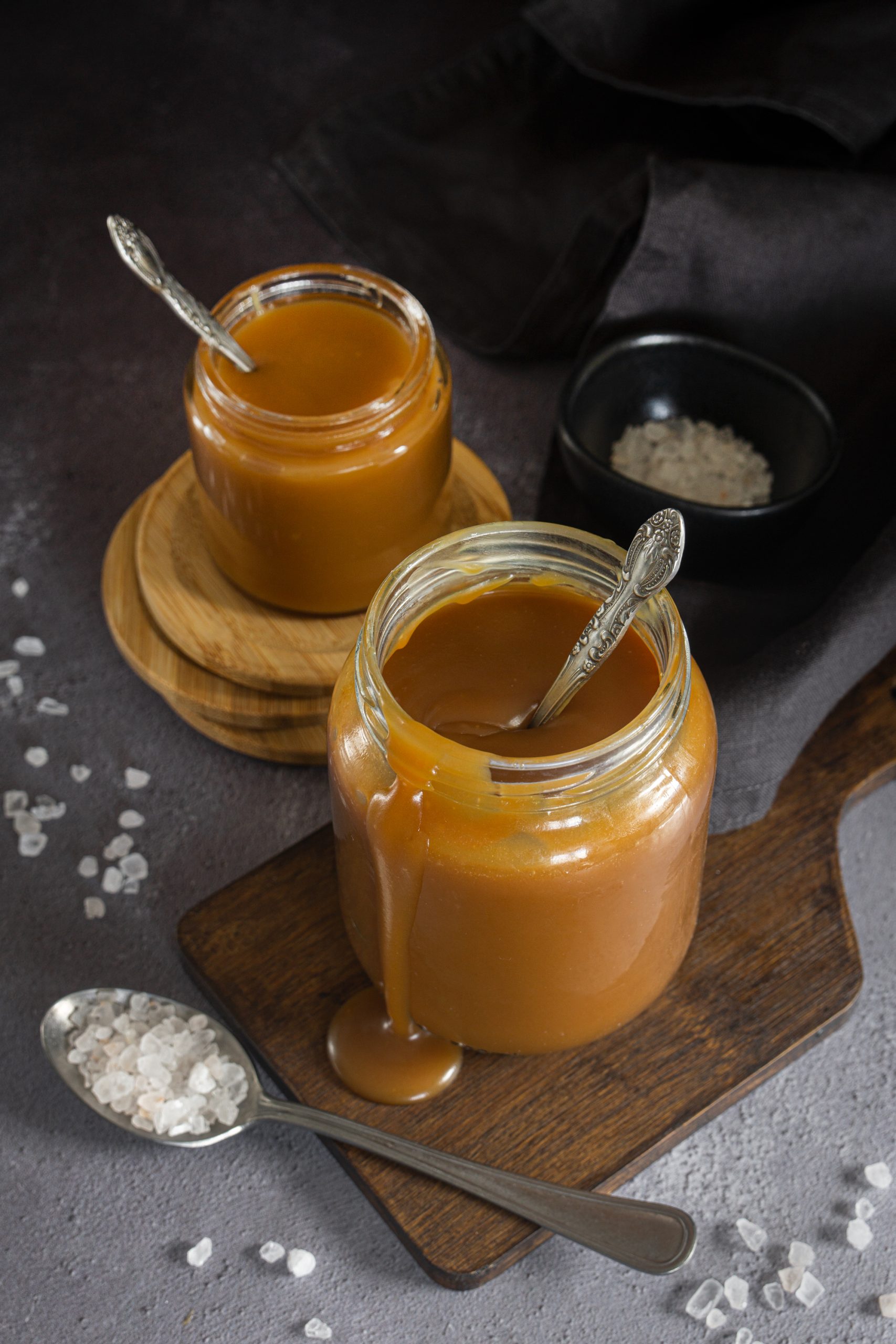
How to prevent caramel recrystallization?
First, use a clean pot. Second, let the sugar melt slowly in the beginning so all of the crystals are melted when they need to be. Third, do not stir at all. Like never. It only makes things easier! This way you prevent the syrup from splashing on the sides of the pot and don’t give extra chance for any foreign matters to get into the syrup. And last, add a chemical crystallization inhibitor – lemon juice. As simple as that! Acid, like heat, helps to break the bond between glucose and fructose and prevents them from forming the bond again while cooling.
Another usually recommended tip is adding some liquid glucose, corn syrup, or honey. When there are lots of simple sugars floating around, it should be harder for sucrose molecules to form. I tried adding honey, but it did not help at all. Moreover, it changed the taste of the sauce. So stick with lemon juice, trust me, acid works like magic!
Why does caramel sauce harden?
One more problem that might occur while making caramel, whichever method you use, is hardening. When you add relatively cool cream to a boiling caramel, it may lump and slightly harden. Most of the time it happens if you add cream all at once without whisking or whisking too slowly. So it’s easy to prevent it by adding room temperature cream SLOWLY while whisking all the time. But if your caramel has still lumped, return it to heat and keep whisking till you get an even consistency.
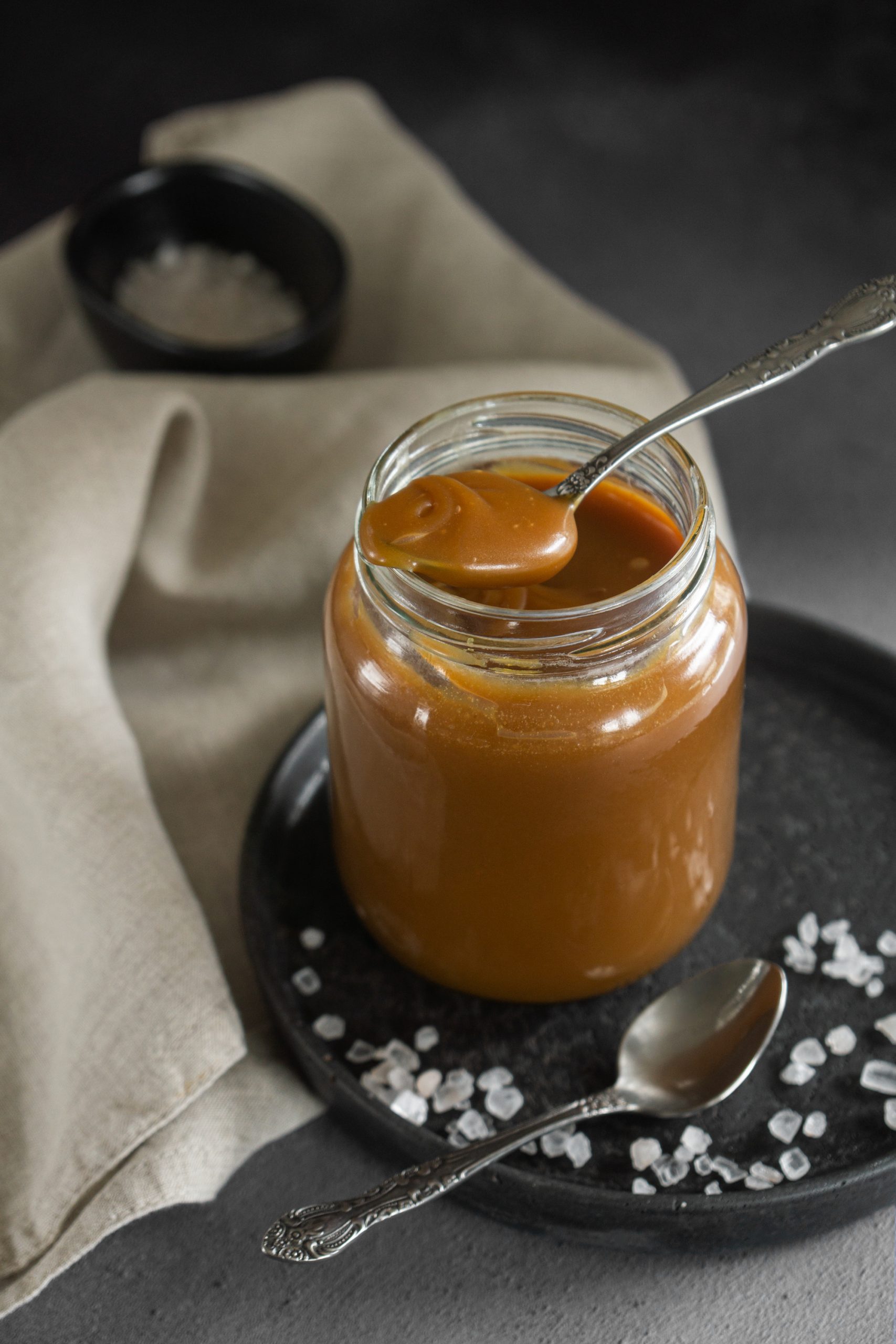
What temperature does caramel need to reach?
If you like precision, you can use a candy thermometer while making this caramel sauce. Insert it before increasing the heat. The perfect temperature for caramel sauce is 170°C / 338°F, but caramelization happens approximately between 160-176°C / 320-349°F, so you can stop a bit earlier, if you prefer lighter caramel, or later if you would like it to be darker and more intense. Just keep in mind that sugar starts burning at 177°C / 350°F. And make sure that you are measuring the temperature of the liquid, not the side or the bottom of the pot.
Why does caramel taste bitter?
Bitter caramel means burned caramel. So if yours taste bitter, you’ve overcooked it. You can do nothing about it after, only heat it a bit shorter the next time.
How to store salted caramel sauce?
When the caramel sauce has cooled, store it in the fridge for up to a month. It will slightly harden in the fridge, but you can reheat it in a microwave or on the stove before using it. It can also stay at room temperature for a few days.
Salted Caramel Sauce
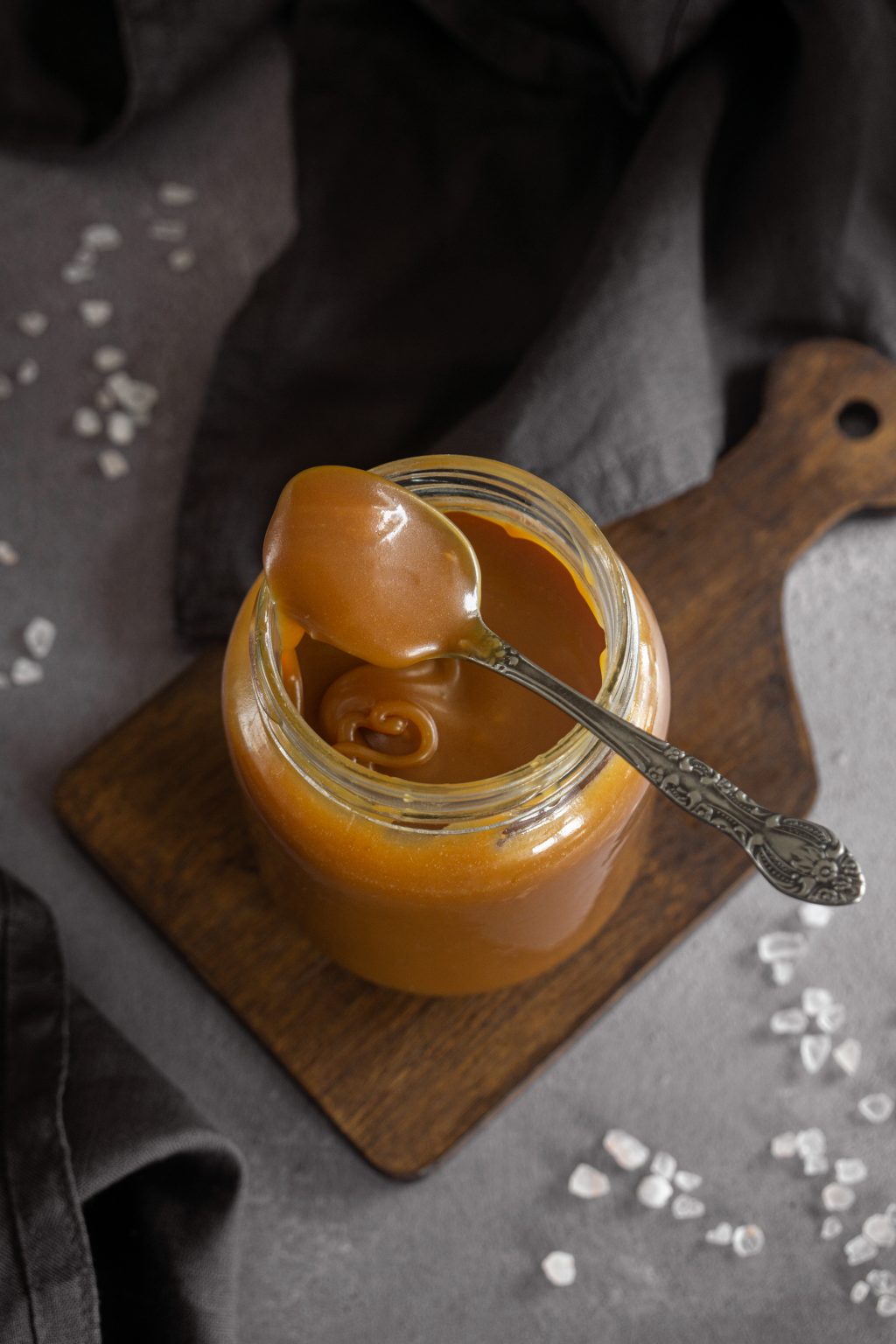
This rich and creamy salted caramel sauce tastes simply amazing. Whether you eat it straight from a jar or drizzle it on ice cream, pancakes, or cheesecake. This foolproof recipe will help you make a perfect caramel sauce every single time.
- Prep Time15 min
- Yield300 ml
- Course
- Dessert
- Tags
Ingredients
- 200 g / 7 oz granulated sugar
- 60 ml / 2 fl oz water
- 0.5 tsp lemon juice
- 120 ml / 4 fl oz whipping cream (30-35% fat, room temperature)
- 60 g / 2.1 oz unsalted butter
- 0.5 tsp salt
- 1 tsp vanilla extract (optional)
Directions
Weigh and gather all ingredients close to the stove where you will be making the caramel.
Pour water and lemon juice into the heavy-bottomed pot. Add sugar, mix carefully to level it and fully soak it in water. Be careful not to splash the sides of the pot.
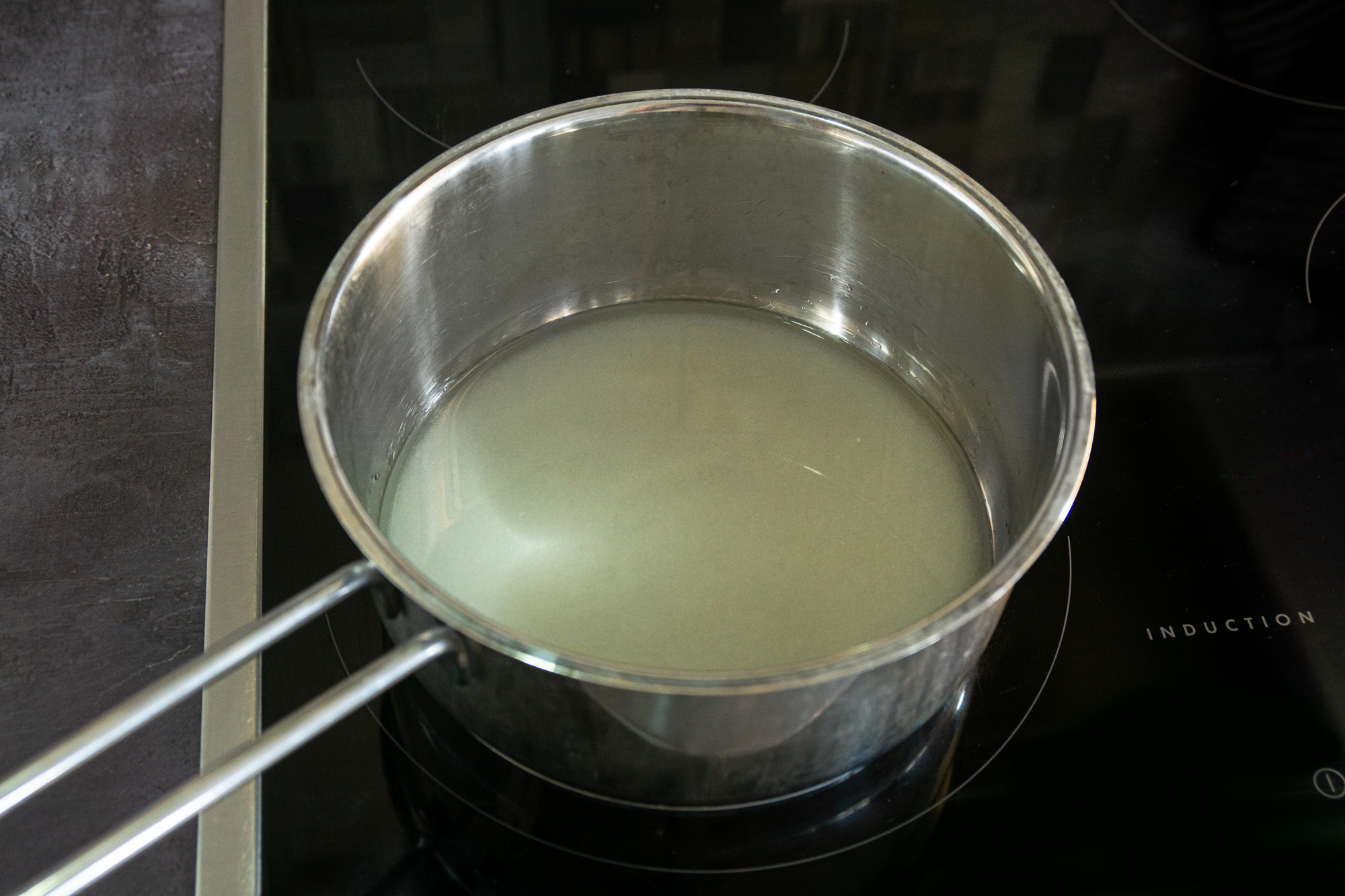
Put the pot on low heat and heat slowly till most of the sugar melts. Don’t stir or move the pot. In 6-8 minutes the mixture will start bubbling on the sides, you will still see some unmelted sugar crystals, but that’s ok – high heat will quickly melt what’s left.
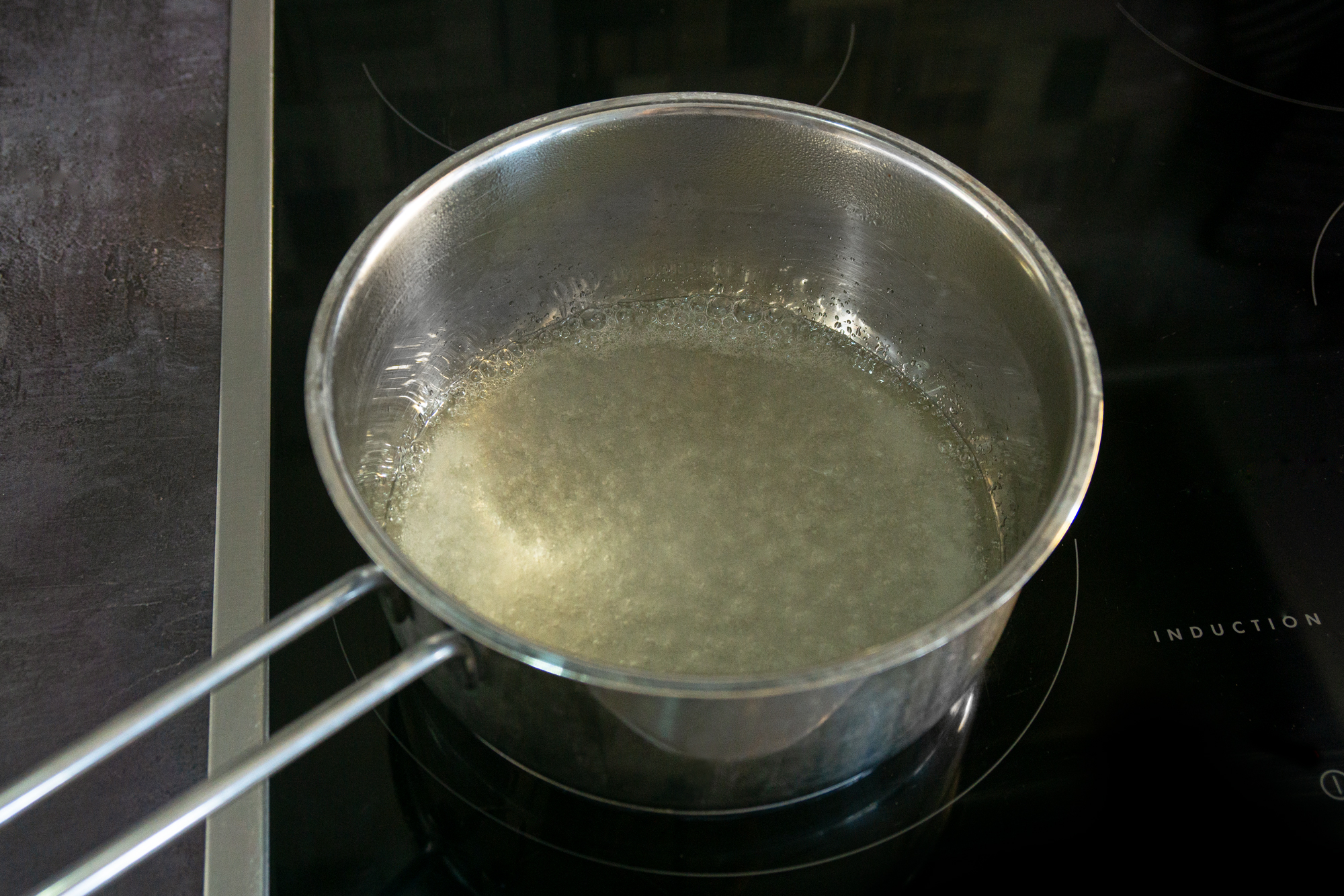
If you are using a candy thermometer, insert it now. Turn the heat up to medium-high (I choose 7 of 10 on my induction stove). The syrup will start bubbling a lot.
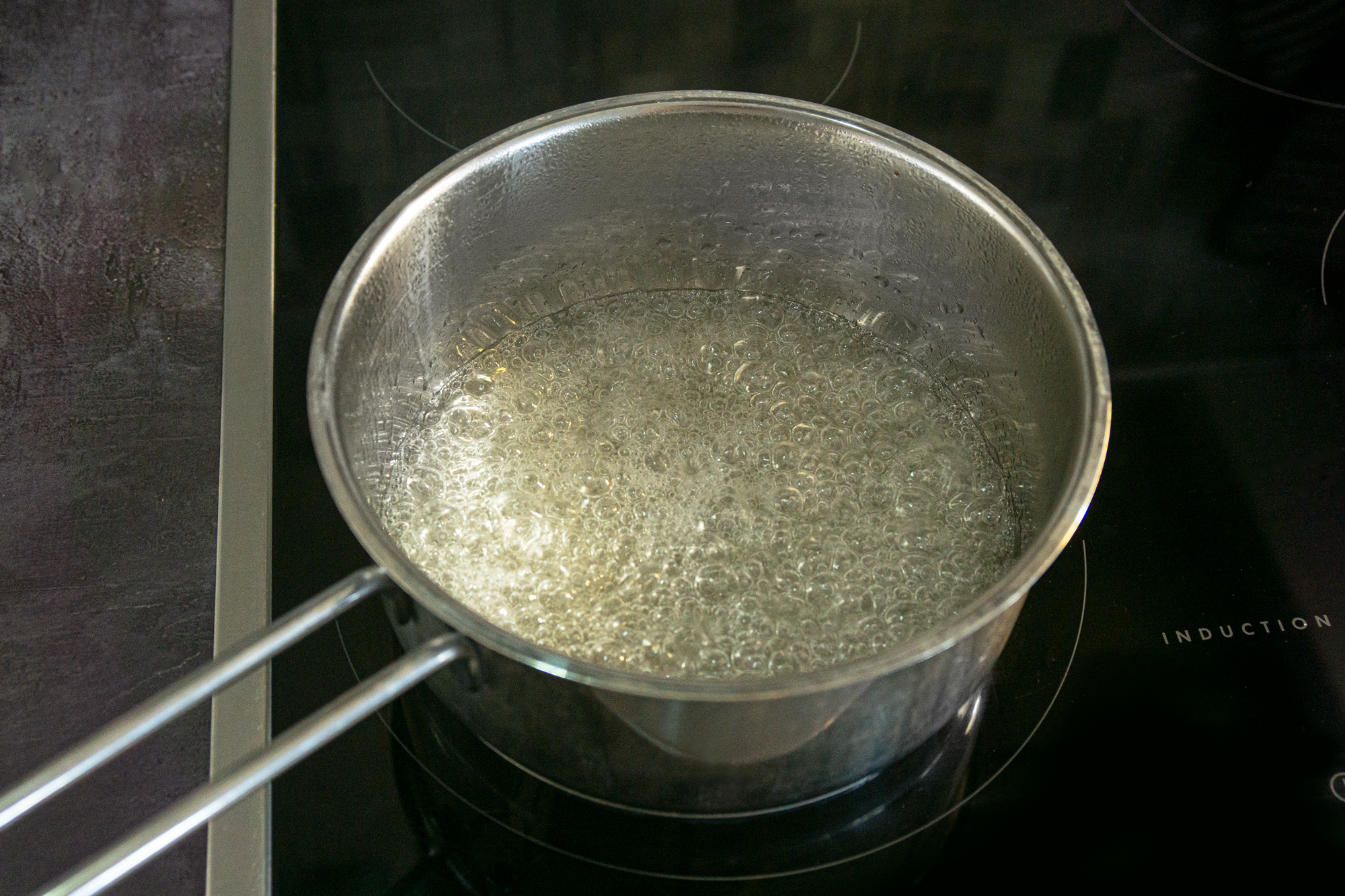
Watch the syrup carefully without stirring or moving the pot. In ~4-5 mins, it will start changing color to yellow and you will start feeling a light caramel smell. When syrup gets amber color or the thermometer reads 170°C / 338°F, remove it from the heat at once.
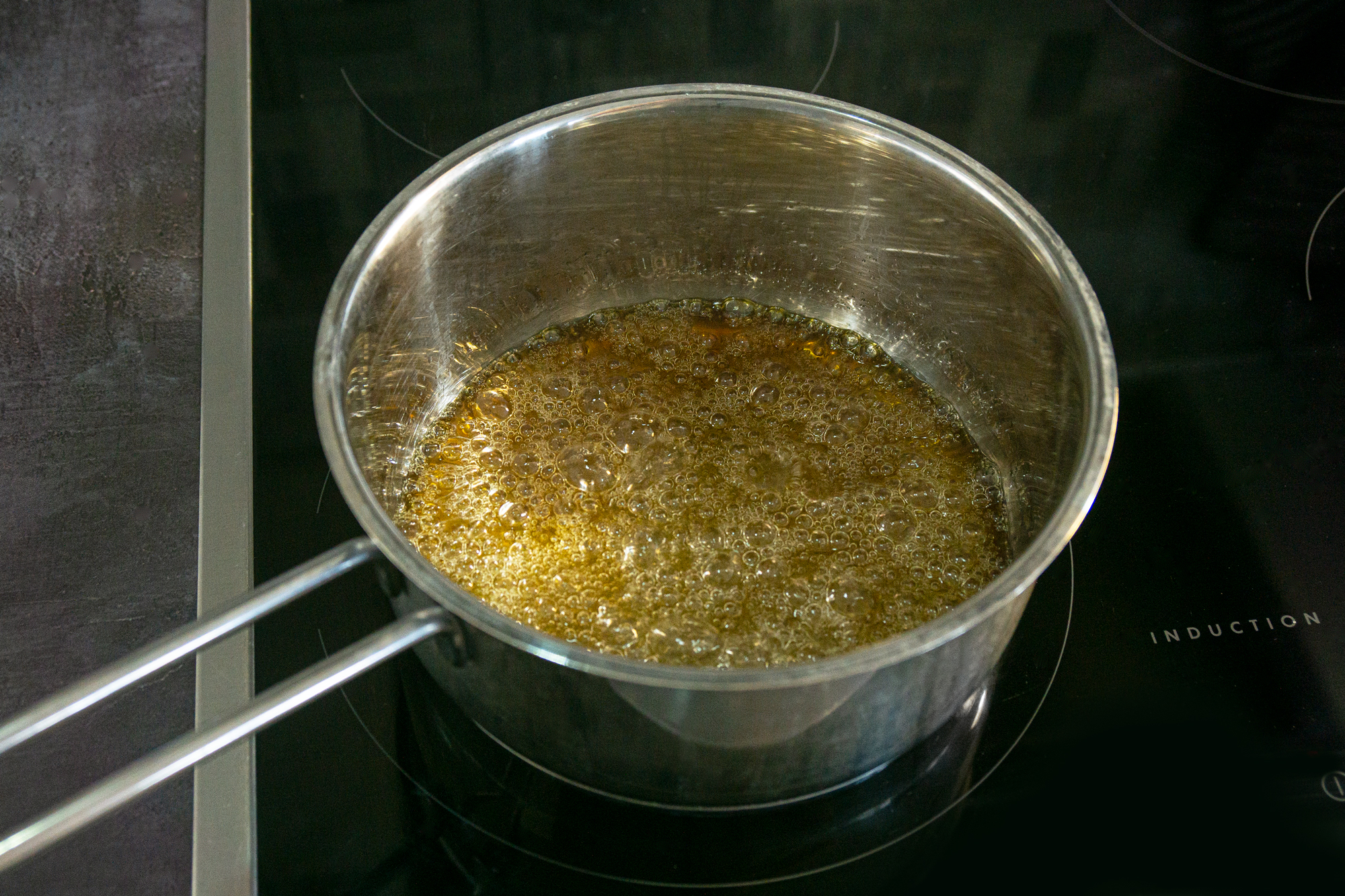
At once, slowly pour in room temperature cream whisking the syrup all the time. Caramel will start bubbling vigorously at the beginning because the cream will suddenly start boiling. Be careful not to burn yourself. It will settle and almost stop bubbling by the time you’ve added all the cream. If caramel has lumped a bit, return it to low heat and keep whisking till consistency gets even.
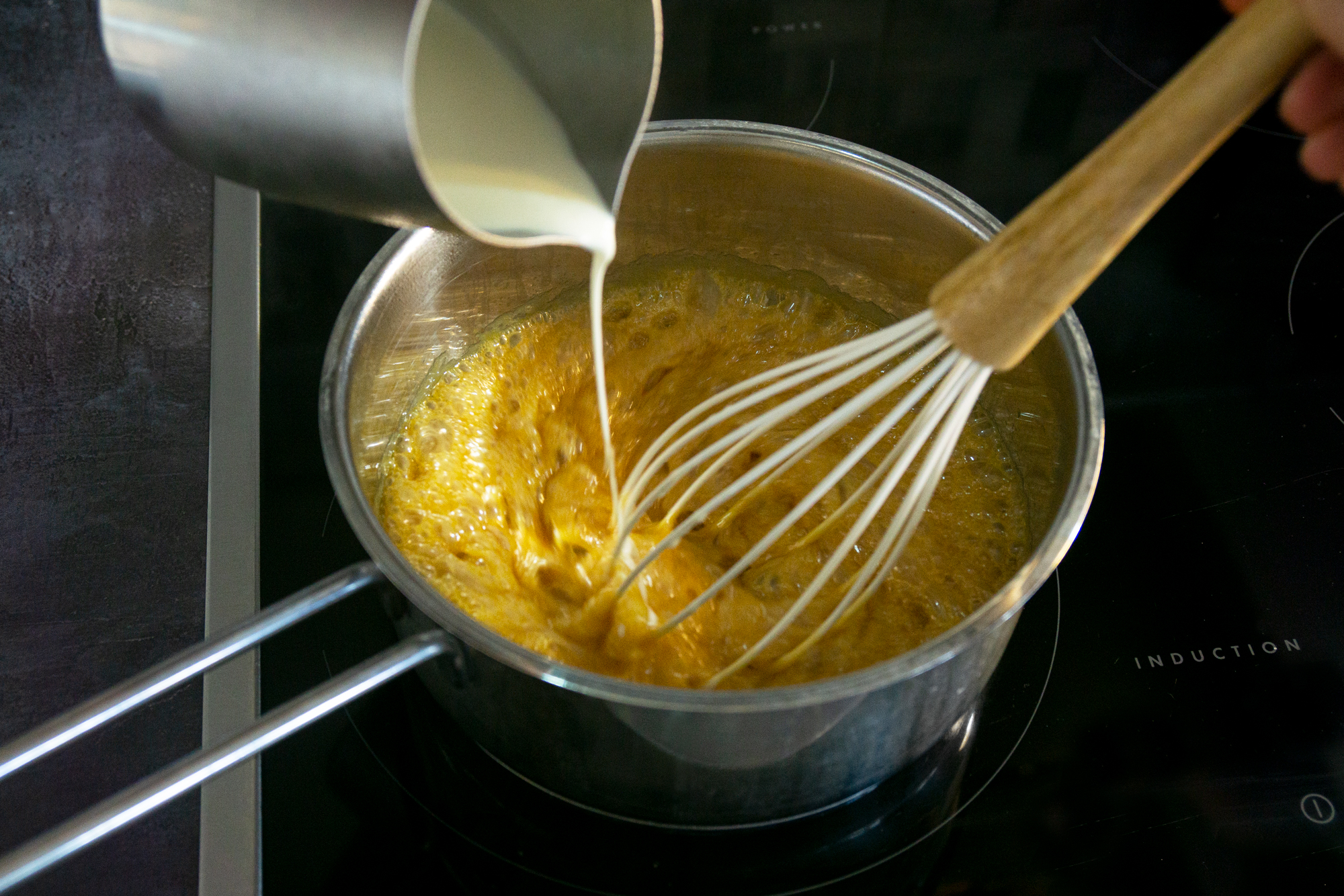
Add butter, and whisk till it fully melts.
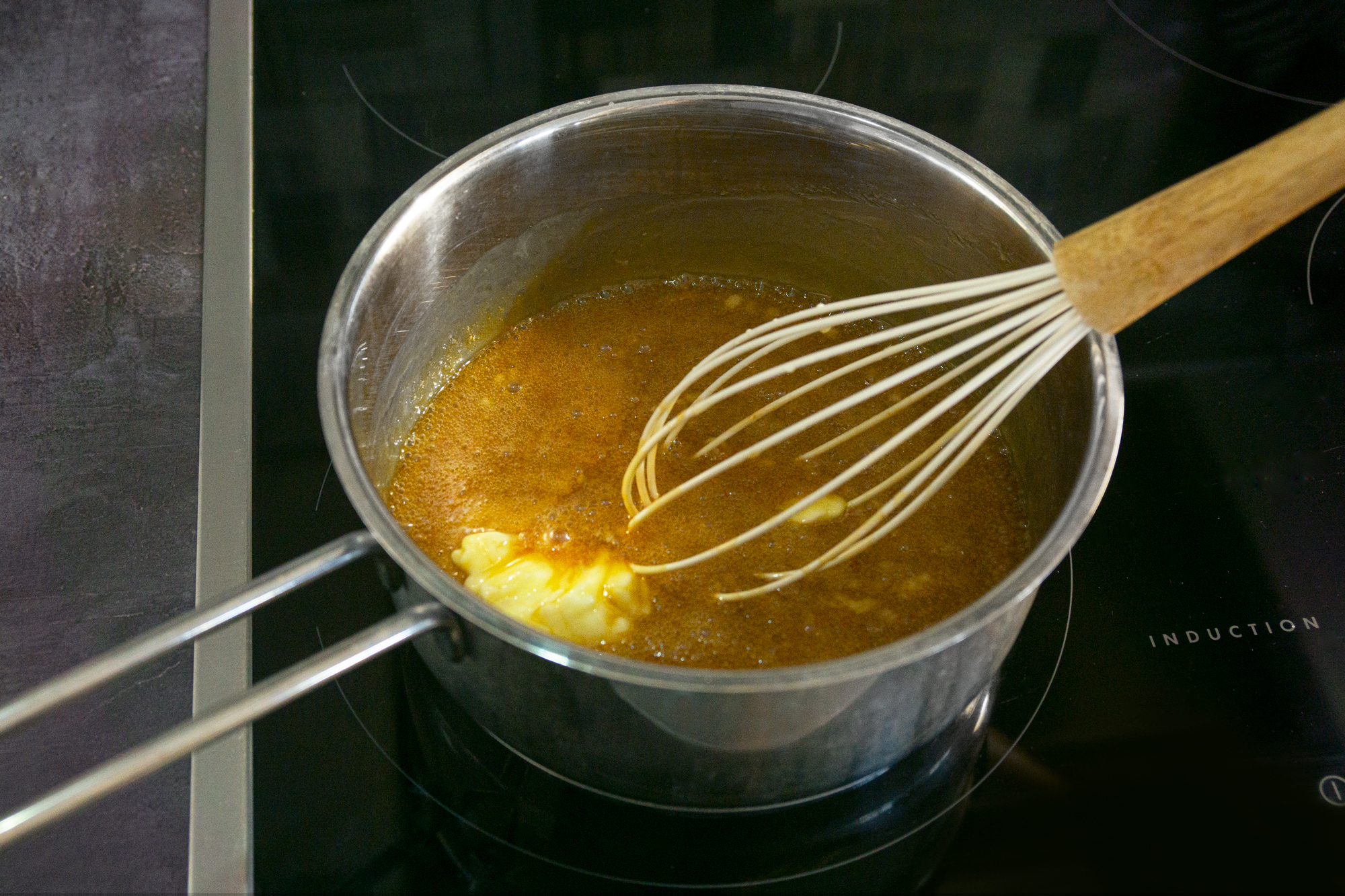
Add salt and vanilla extract, and whisk until combined.
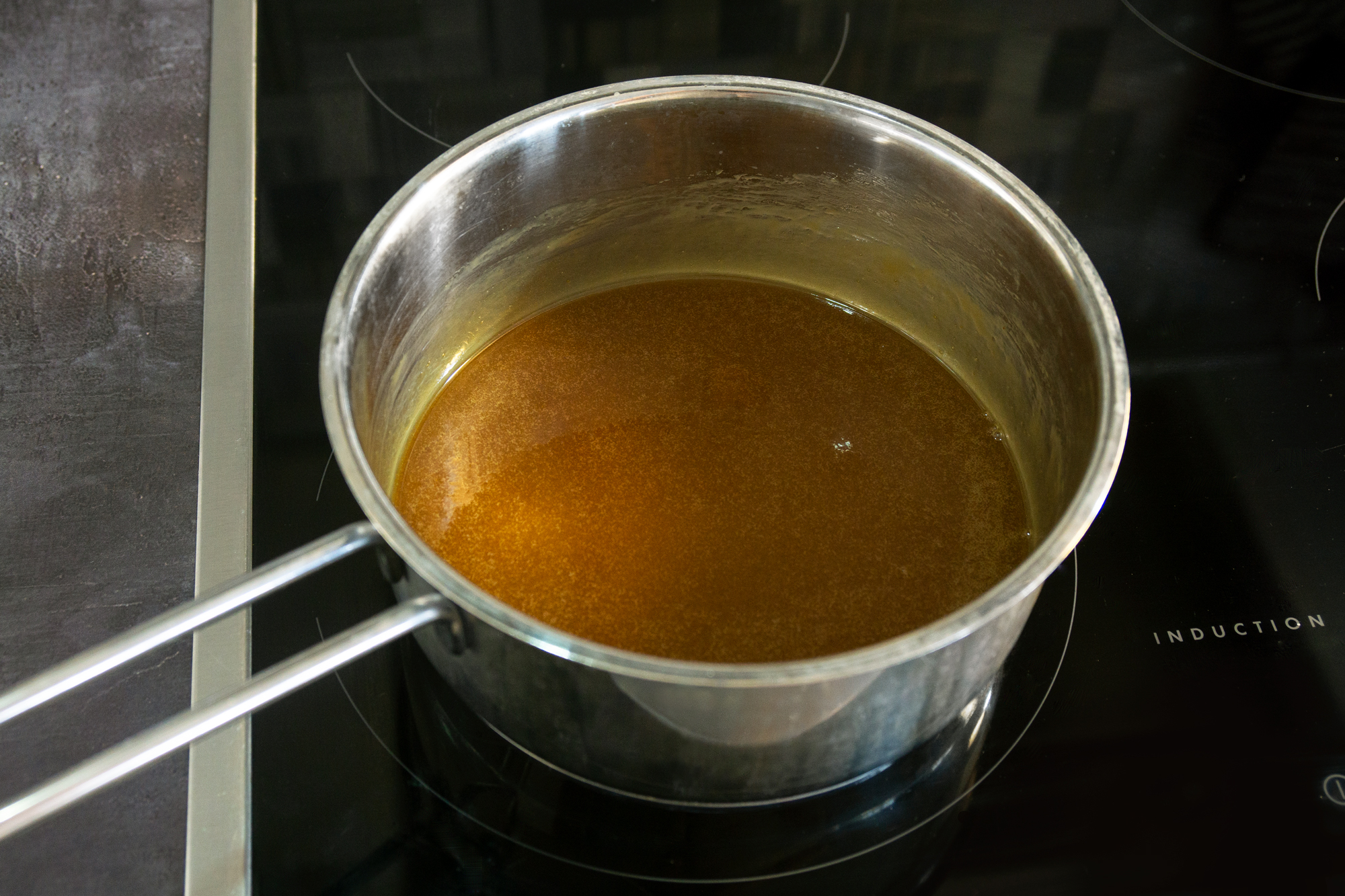
Leave the caramel to cool slightly, then pour it into a glass jar to cool completely. Just prepared, the caramel sauce will be very runny but it will thicken and get lighter in color while cooling.
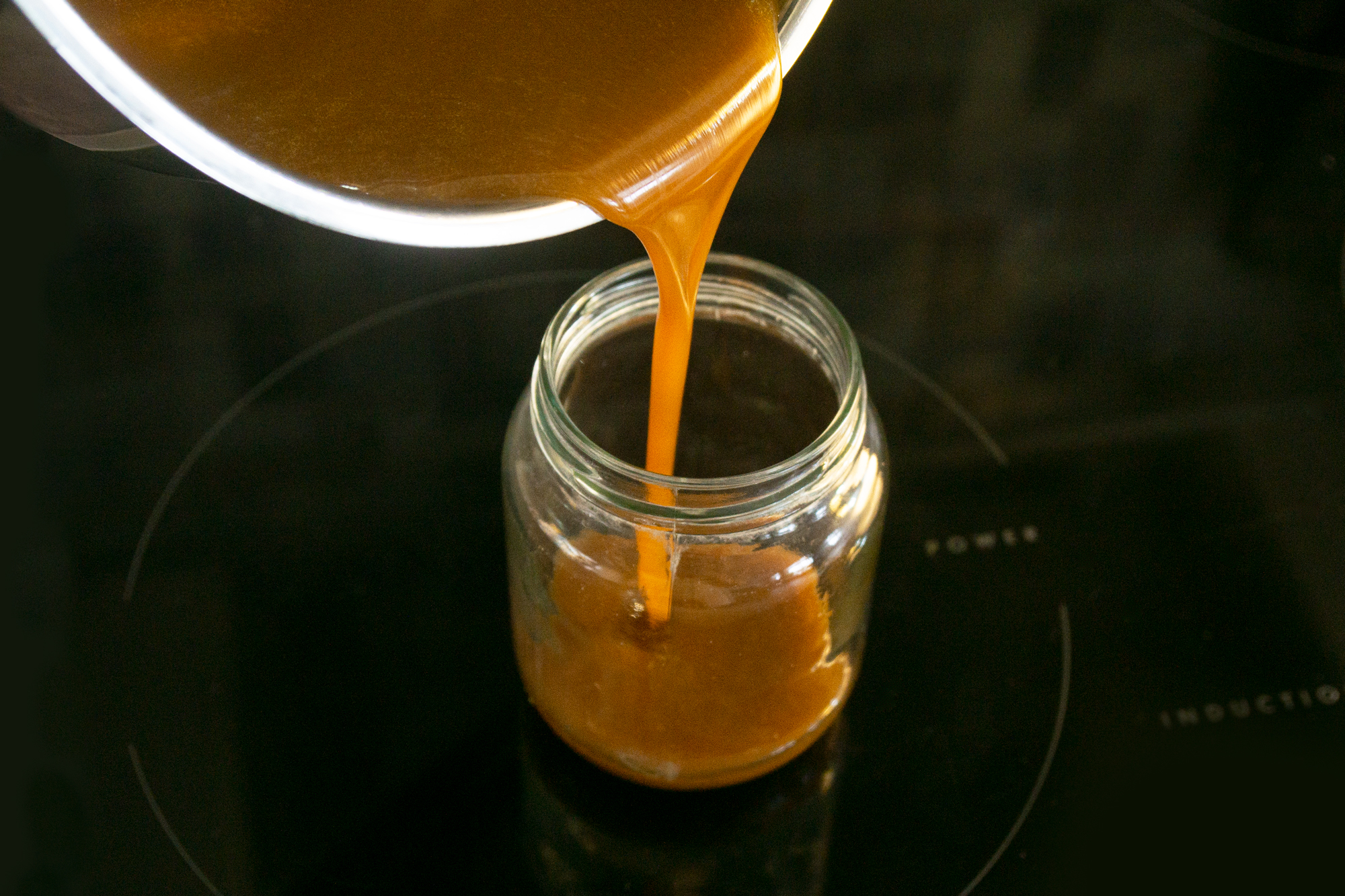
When fully cooled, store in the fridge for up to a month. It can stay at room temperature for a few days.
notes
- Choose the pot that’s bigger than you think you need. The sugar syrup will bubble and double in size. The heavy-bottomed pot will distribute heat more evenly.
- The exact timings will depend on your stove and the pot you choose, so trust the look and color of the syrup more than the timer.
- Watch your boiling syrup carefully, never leave it. After it started changing color, it can burn very quickly.
- If you are using a candy thermometer, make sure that you are measuring the temperature of the liquid, not the bottom or the side of the pot.
- You can change the amount of salt according to your taste.
